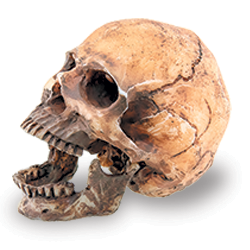 |
 Candy Adams,
Candy Adams,
CTSM, CME,
CEM, CMP, CMM,
"The Booth Mom,"
is an independent exhibit-management
consultant, trainer, speaker, writer, and an Exhibitor conference
faculty member.
CandyAdams
@BoothMom.com |
| |
 ravel. Our colleagues and friends think it's the glamorous part of our jobs. But to a busy trade show manager, it means constantly packing and unpacking, sleeping in unfamiliar beds, compiling piles of receipts for expense reports, wreaking havoc on your internal clock, eating bad convention-center food, and playing catch-up with both your job and your personal life. ravel. Our colleagues and friends think it's the glamorous part of our jobs. But to a busy trade show manager, it means constantly packing and unpacking, sleeping in unfamiliar beds, compiling piles of receipts for expense reports, wreaking havoc on your internal clock, eating bad convention-center food, and playing catch-up with both your job and your personal life.
As a seasoned (and often tired) road warrior, here are some tips and tricks to help you live through it - and have a little fun while you're at it.
Home, Suite Home
Have you ever pinpointed exactly what it takes to make you comfortable during your extended time on the road? There are some things that just aren't negotiable for me at hotels. I need my room to be clean, quiet, non-smoking, and set up to act as a substitute office while I'm at a show. So I always request a quiet room away from elevators, ice machines, and vending machines; one that's not under the workout room; and, preferably, a room on the top floor without the patter of little - or big - feet above me. I also require high-speed, wired Internet access (wired connections tend to be more secure, and they have less of a tendency to slow down if a lot of people are accessing the Internet at the same time).
My No. 1 tip for getting a worry-free, good night's sleep is to travel with your own alarm clock - one that you know how to set without having a PhD in electrical engineering. But make sure your travel alarm has a back-up battery in case of a power failure.
I also travel with everything I need to stock my portable office: my trusty laptop computer, a miniature color printer that weighs about 3 pounds, a USB portable storage drive, a CAT5 cable, a retractable phone cord, an 8-foot extension cord, my cell phone and digital-camera chargers, and a nightlight for my bathroom.
My home-away-from-home office kit includes everything I need: a small package of paper, fax cover sheets, blank expense-report forms, an envelope for receipts, and some pre-printed FedEx forms. I also stock it with correction tape, a small roll of adhesive tape, a multi-color highlighter, a miniature stapler, a mechanical pencil with a big eraser, and various colors and sizes of Post-it notes.
All's Fare in Shuttles and Taxicabs
If you've ever been stranded on a cold, wet night in front of the Jacob K. Javits Convention Center with nary a taxi in sight, you know the importance of transportation planning.
Transportation needs are usually simple at a convention city: between the airport and hotel, and between the hotel and convention center. Most exhibit managers use one or more of the following options: taxis, shuttles, chartered vans or limos, or rental cars.
Start by planning how you will get from the airport to the hotel. Are there any shuttle services that have cut a deal with the show or your hotel? If several of your staff members are coming in on the same flight, would chartering a limo or van be more economical than a miniature fleet of taxis?
Your hotel's concierge or bell desk can usually provide the approximate taxicab fares from your hotel to the airport and convention center. Don't hesitate to contact them and explain the details of your transportation needs. They might have suggestions to help your cut costs without asking staffers to hitchhike to the hotel. Also ask for the number of a local taxi company, and keep it handy in case you need to call a cab.
One of my clients in a show city that's known for long taxi lines contracts 13-passenger vans to transport exhibit staff between the airport, hotel, and convention center on a published schedule. This helps them avoid lines and use their time more efficiently.
If you're planning to use the free show shuttles from hotels to the convention center, be sure to publish the shuttle schedule in your staff communications. You'll probably have to plan alternative transportation for early mornings and late nights when the shuttles aren't running. However, the so-called "free" shuttles aren't really free; show management often requires participating hotels to add $7 to $10 to their per-room-night charge to offset the shuttles. Staying at an adjacent hotel that isn't part of the block can save you this fee.
At face value, renting a few cars or vans may seem like the cheapest option, but make sure you also consider taxes on these vehicles, which can almost double the cost in some cities and may not be included in the published price. Also consider the cost of parking, both at the hotel and convention center, which can exceed $50 per day. You'll also need to know your company's travel policy regarding the size of car you can rent and your insurance obligations.
Finally, don't forget that some cities have local mass-transit options, such as trolleys, buses, monorails, and even ferries. But if you're depending on these options, make sure you know the schedules and how to get tickets.
Over-Packers Anonymous
I confess: I'm an over-packer. I'm known for taking a large, hard-sided suitcase full of 35-dozen homemade cookies to shows to share with show management, contractors, laborers, and my exhibit staff. (Never underestimate the power of a homemade cookie to get things done on the show floor.)
To meet the airlines' restrictions on the number and weight of checked and carry-on bags, I ship a suitcase containing my show and leisure clothes and don't-need-them-every-day toiletries with my exhibit. This suitcase ends up tucked in an empty spot in a crate, on a pallet, or in a D-container. Thus, packing my show wardrobe is one less thing I have to worry about at the last minute, and I don't have to pay the overweight- or excess-bag fees. Plus, I've never lost my bags on a van line.
Being as anal retentive as I am, I keep a sheet protector with multiple copies of my packing checklist and a highlighter pen in my suitcase. As I pack, I highlight the items as I put them in the suitcase. When all the items I need on the list are highlighted, I'm done and don't have that usual what-did-I-forget anxiety on my way to the airport.
For the suitcases that travel with me and not my exhibit, I'm a little more careful about packing. I've learned to pack most of my clothes in plastic, closeable bags that the Transportation Security Administration folks can see through, so they don't have to paw through all my stuff. I've even found uses for those shower caps that are part of the amenity package in most hotel rooms. They make great "booties" for packing your shoes.
If you have more bags than hands to pull them, check out my favorite luggage carts from Kart-A-Bag Manufacturing Inc. (www.kart-a-bag.com). These carts are almost indestructible and are lifesavers when it comes to getting press kits, giveaways, and equipment to and from the show floor. But watch out - they disappear if you don't keep your eye on them at the convention center because the laborers think they're great for moving their tool boxes, too.
Fun? What's That?
When I get back from a show, people always ask me what I saw in the convention city. Usually it's just the airport, the inside of a dirty cab, a drive-by viewing of the city between the airport and hotel lobby, a mediocre hotel room, and a short trip to yet another convention center. Not exactly a tourist's delight.
For the last few years, I've made a concerted effort to add a couple of "pleasure" days to the beginning or end of my show travel, especially in some of the smaller, "second tier" show cities that I don't visit quite as frequently. Sometimes even scheduling an early arrival or late departure and allowing yourself a few extra hours for a brief walk downtown or a leisurely lunch at a recommended restaurant makes work-related travel feel a little more bearable.
If you're a member of AAA, get copies of its guidebooks and maps before the show. Look for the items marked as "gems" with a little diamond next to them - these are the "don't miss" tourist sites. I'm also a fan of organized city tours. They tend to provide a nice overview. Then, after the tour, you can go back and explore further the areas that most interest you. You can also talk to the concierge at your hotel or contact a local convention and visitors bureau about local tours and landmarks.
The fact of the matter is travel is a necessary evil if you're an exhibit manager, but it doesn't have to be a total drag. If you heed my advice and try to enjoy yourself, you're that much more likely to survive the trip - and keep your sanity intact until you return home. Bon voyage! e
|





 ravel. Our colleagues and friends think it's the glamorous part of our jobs. But to a busy trade show manager, it means constantly packing and unpacking, sleeping in unfamiliar beds, compiling piles of receipts for expense reports, wreaking havoc on your internal clock, eating bad convention-center food, and playing catch-up with both your job and your personal life.
ravel. Our colleagues and friends think it's the glamorous part of our jobs. But to a busy trade show manager, it means constantly packing and unpacking, sleeping in unfamiliar beds, compiling piles of receipts for expense reports, wreaking havoc on your internal clock, eating bad convention-center food, and playing catch-up with both your job and your personal life.


